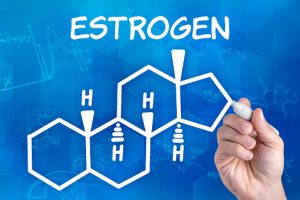
- Responsible for female puberty
- Control growth of the uterine lining during the menstruation cycle and at the beginning of pregnancy
- Involved in breast development and breast changes seen during pregnancy
- Play a role in bone and cholesterol metabolism
- Helps to regulate food intake, body weight, glucose metabolism, and insulin sensitivity
Required Estrogen Levels in Women
Here are the general levels of estrogen that should be found in women during specific age periods of their lives.
- 20 to 29 years: 149 picograms
- 30 to 39 years: 210 picograms
- 40 to 49 years: 152 picograms
- 50 to 59 years: 130 picograms
Low estrogen level: Symptoms and causes
As previously mentioned, menopause commonly causes decreased levels of estrogen in females. However, women of all ages can experience low estrogen levels from a variety of causes, including hysterectomies (partial or complete removal of the reproductive organs), radiation treatments, and severe cases of anorexia.
A common and well-known consequence of low estrogen levels is the increased fragility of bones seen in post-menopausal women, leading to osteoporosis. Estrogen is known to work in conjunction with calcium, vitamin D, and other minerals to keep bones strong, and without it, bones become brittle and tend to fracture more easily.
Other symptoms of low estrogen include:
- Fatigue
- Depression
- Breast tenderness
- Mood swings
- Increased urinary tract infections (UTIs)
- Trouble concentrating
- Headaches
- Hot flashes
- Irregular or absent periods
- Painful sex due to the lack of vaginal lubrication
15 foods that increase estrogen level
There are several estrogen-rich foods that may help boost your estrogen level. These foods contain phytoestrogen, which is a plant-based estrogen that mimics estrogen once it is processed by the body.
The following is a list of foods that are known for containing excessive amounts of phytoestrogens. It is important to keep in mind that estrogen rich foods may have unwanted effects in men.
Soybean products: Soy is a rich source of phytoestrogen and comes in a variety of easy to consume forms like soy milk, tofu, or edamame. Soy products are the greatest source of isoflavones, a class of phytoestrogen that can be easily consumed in your diet. Soy is also a great source of protein, making it an ideal meat substitute for vegans and vegetarians.
Flaxseeds: These little seeds contain up to three times the phytoestrogens of soybeans, but your body will not reap their benefits unless they are cracked or ground prior to consumption. Also high in fiber, flaxseeds will make you feel full and may aid in weight loss and in the reduction of cholesterol.
Sesame seeds: Whole seeds—or even sesame oil—contain lignans (a chemical compound found in plants) that possess phytoestrogens. The seeds are also loaded with fiber and are a great source of minerals.
Beans: They are relativity high in phytoestrogens, but they don’t get much attention. Beans are known for having a high fiber content, which helps to control cholesterol levels. Types of beans include peas, pinto bean, and lima beans
Dried Fruit: Not only are they a healthy snack, but they also contain a modest amount of phytoestrogens. It is advised to limit how much you eat, as dried fruit does contain a lot of calories. Apricots, dates, and prunes are good sources.
Bran: Wheat bran is a reliable way get your dose of phytoestrogens. It can be found in muffins, bread, and cereals.
Nuts: Several types of nuts, including pistachios, chestnuts, hazelnuts, and walnuts, are great sources of phytoestrogens.
Alfalfa Sprouts: Naturally low in calories and carbohydrates, alfalfa sprouts are an excellent choice.
Chickpeas: A reliable source of phytoestrogens that are also high in fiber and protein.
Olives and olive oil: Having a bevy of healthy effects for your hair, skin, nail, and heart, they are also great for your hormone levels.
Green beans: Low in calories, high in iron, and high in phytoestrogen, green beans are a great food to eat if you’re a woman.
Peaches: Along with phytoestrogen, peaches also contain several other nutrients to help you maintain overall health.
Strawberries: Similar to peaches, strawberries contain a wide variety of nutrients to support health.
Red wine: Red wine helps the body to produce more estrogen on its own and some studies have shown it to help reduce the risk of cardiovascular disease – in moderation of course.
Multigrain bread: When choosing a breadstick to multigrain or whole grain as it is much more nutritionally dense than white bread.
Knowing how to take control of your body can be empowering, especially when it is as simple as modifying your diet and incorporating estrogen-rich foods to combat menopause. But it is important to know that hormones can have several unwanted effects when they become unregulated.
Menopausal women should speak to their primary care physician about their menopausal symptoms. It is also a good idea to mention all of the herbal medications and diet changes you’ve made, to give them an idea of what you’re already doing to fight against menopause symptoms.
Related: Lower abdominal pain in women: Causes and treatments